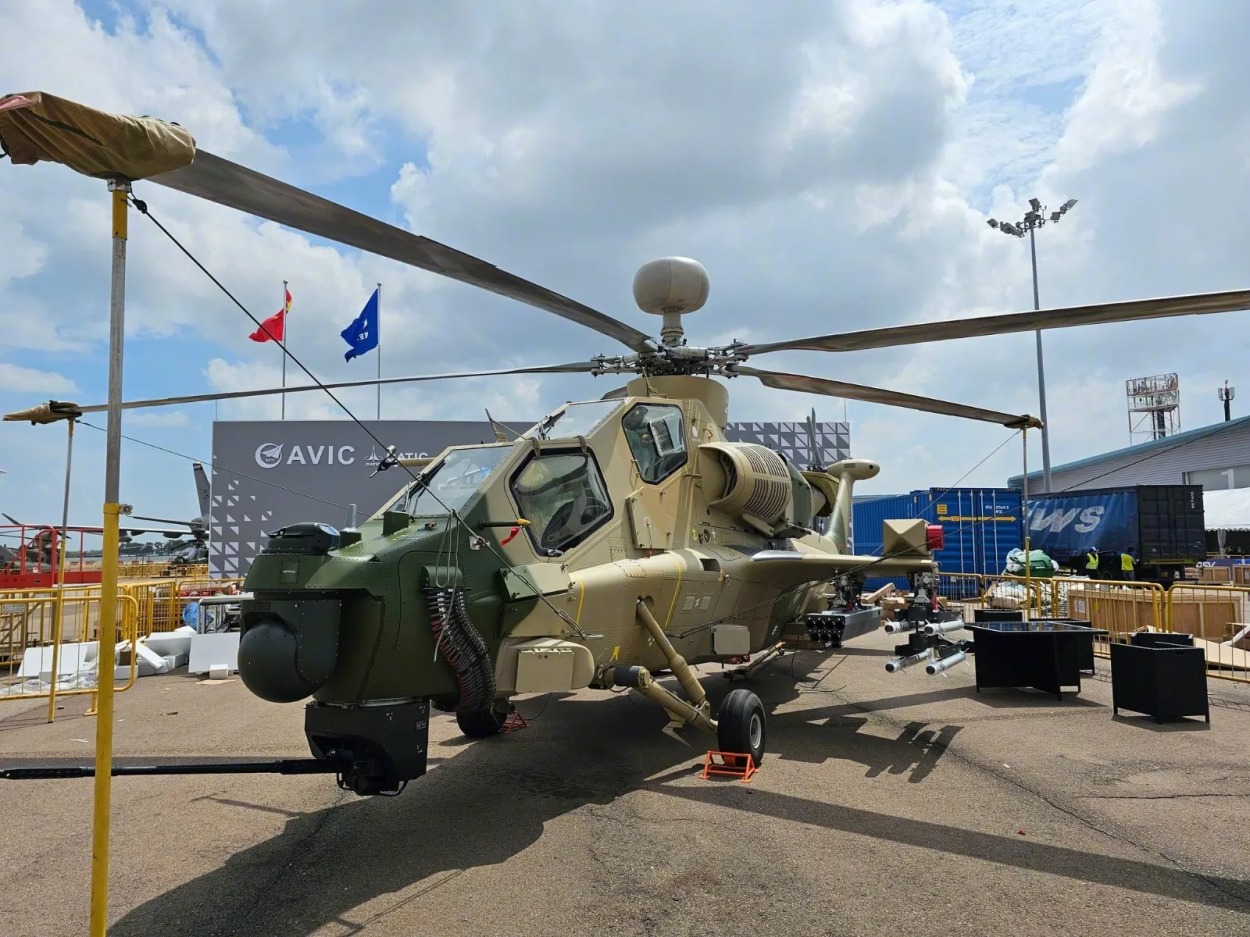China is displaying the export version of its domestically developed attack helicopter, the Z-10ME, for the first time at the Singapore Air Show, which will be held between February 20 and 25.
In service with the People’s Liberation Army’s (PLA) aviation units, it has extensively been seen in exercises and drills and featured frequently in official publicity material.
The medium-class attack helicopter is seen flying in large formations during training maneuvers on both China’s eastern and western fronts – Taiwan and India. The helicopter is also set to be inducted by the Pakistan military, which was supposed to begin receiving deliveries of the Z-10ME in late 2023.
Reports said that the Chinese aircraft was a substitute for the Turkish T129 ATAK helicopter that Islamabad could not acquire due to the lack of approval from the US since it is powered by an American engine.
Pakistan later canceled the project in January 2022.
Interestingly, China is also displaying its first indigenously developed narrow-body commercial airliner, the COMAC C919, for the first time outside the mainland. The plane would also perform a flying display for spectators, among the eight others that also includes an aerial performance by the Indian Air Force’s (IAF) Sarang helicopter aerobatic team.
The Chinese passenger plane’s entry into the global civilian aviation market comes at a time when leading airline manufacturers Boeing and Airbus are “struggling to ramp up production and meet demand for new planes, and Boeing struggling with a string of crises,” Reuters said.
Z-10ME In Singapore Air Show’s Static Display
Handles on X (formerly Twitter) showed the Z-10ME at the static display in a desert light-brown and green color scheme. While the Z-10 would not be participating in a flying display, its primary competitor at the air show appears to be the AH-64E Apache, two of which would also be placed in a static display.
One aircraft would be from the US Army, while the other Apache is an AH-64D from the Republic of Singapore Air Force (RSAF).
The show’s website does not mention the Apaches either to be taking part in a flying display. However, Boeing would certainly have a massive pavilion and exhibit with possibly a mockup of the Apache, with its executives actively pitching the helicopter to military delegations.
The Z-10ME is the export variant of China’s latest attack helicopter, which is already in service with the People’s Liberation Army. It has a range of roughly 1,120 kilometers and an empty weight of around roughly 5,100 kg.
It fires a 23-millimeter chin-mounted cannon and four external hardpoints that can hold air-to-ground, air-to-air, and rocket launchers. Both the left and the right-hand-side weapons stubs can carry up to 16 anti-tank guided missiles (ATGM), four multiple 7-barrel rocket launchers, or two multiple 32-barrel rocket launcher pods, depending on the nature of the mission.
The Z-10ME also features what looks like missile approach warning sensors on the side chin, under the weapons stubs, a sand filter for the engine intakes, and heavier armor to withstand small arms fire.
Competitor To AH-64 Apache?
Chinese media claims the Z-10 is easier to maintain, has greater range, and is faster and more maneuverable than the Eurocopter Tiger. As of 2022, some of the Z-10s stationed in the border facing India were reported to be flying with an engine developed in cooperation with French engine maker Safran Helicopter Engines.

The power plant is capable of supporting operations in high-altitude and ratified atmosphere. It is not clear if the rest of the Z-10s with the PLA or the export-oriented Z-10ME also fly with the same power plant.
Nevertheless, the presence of a millimeter wave radar on the mast, above the main rotors, suggests the Z-10 is somewhere largely designed to be comparable to the American AH-64 Apache’s Longbow variant.
The systems are fire-control radars that target and guide many of the long-range anti-tank missiles and other air-to-ground munitions.
Zhao DaShuai, a member of China’s People’s Armed Police (PAP) Propaganda Bureau on X (formerly Twitter said in a post, “Components made from better materials that can withstand more heat and pressure are all factors in squeezing more power into an engine.”
This hints that China, like India, is struggling with the niche metallurgical sciences that make successful aero engines – a technology mastered by the US, UK, France, and Russia.
Beijing, however, is still largely ahead of India in possessing a diverse series of operational jet engines like the WS-10 and WS-12 for fighters and the WZ-16 turboshaft engines for helicopters.
- The author can be reached at satamp@gmail.com
- Follow EurAsian Times on Google News




